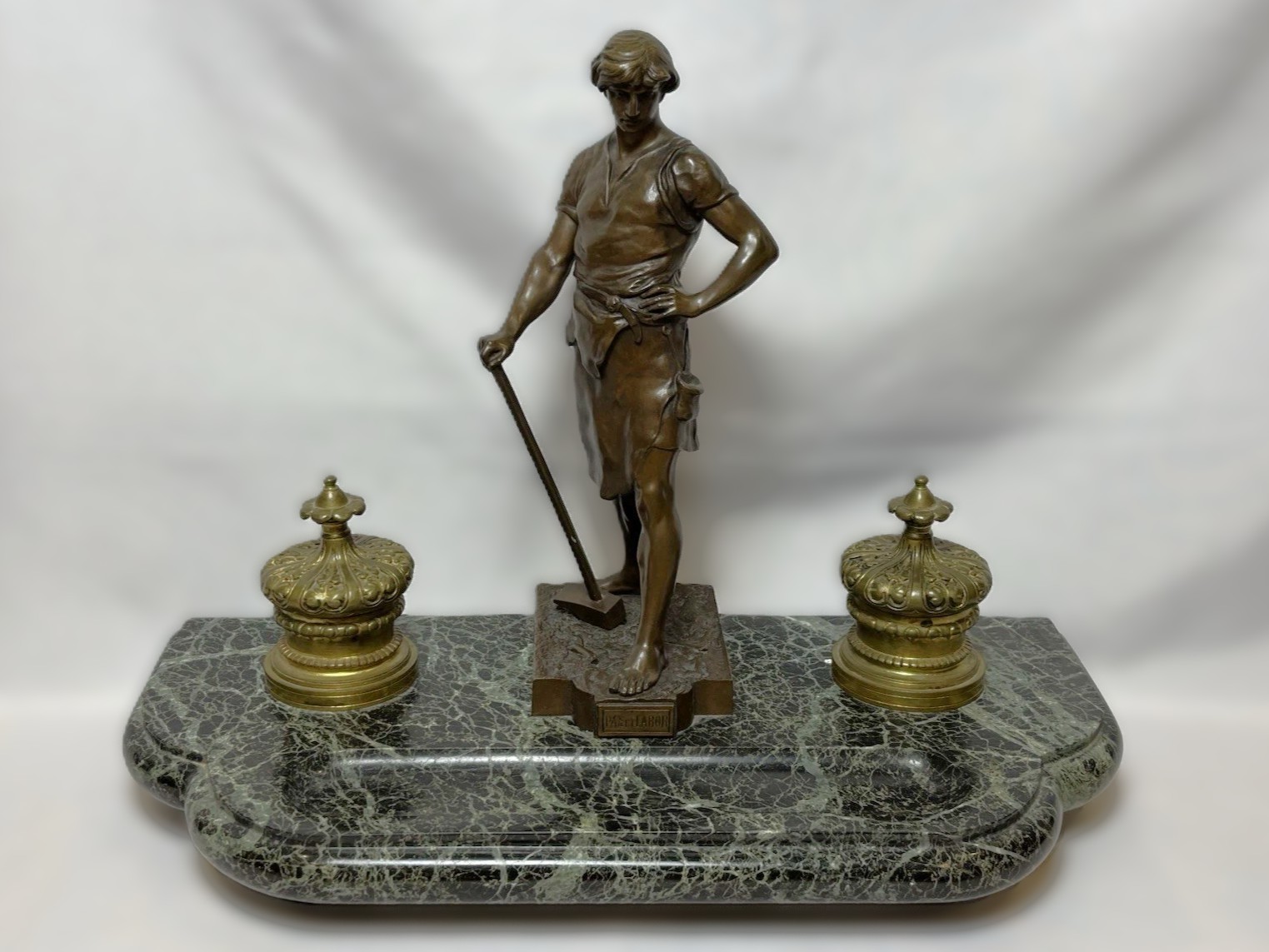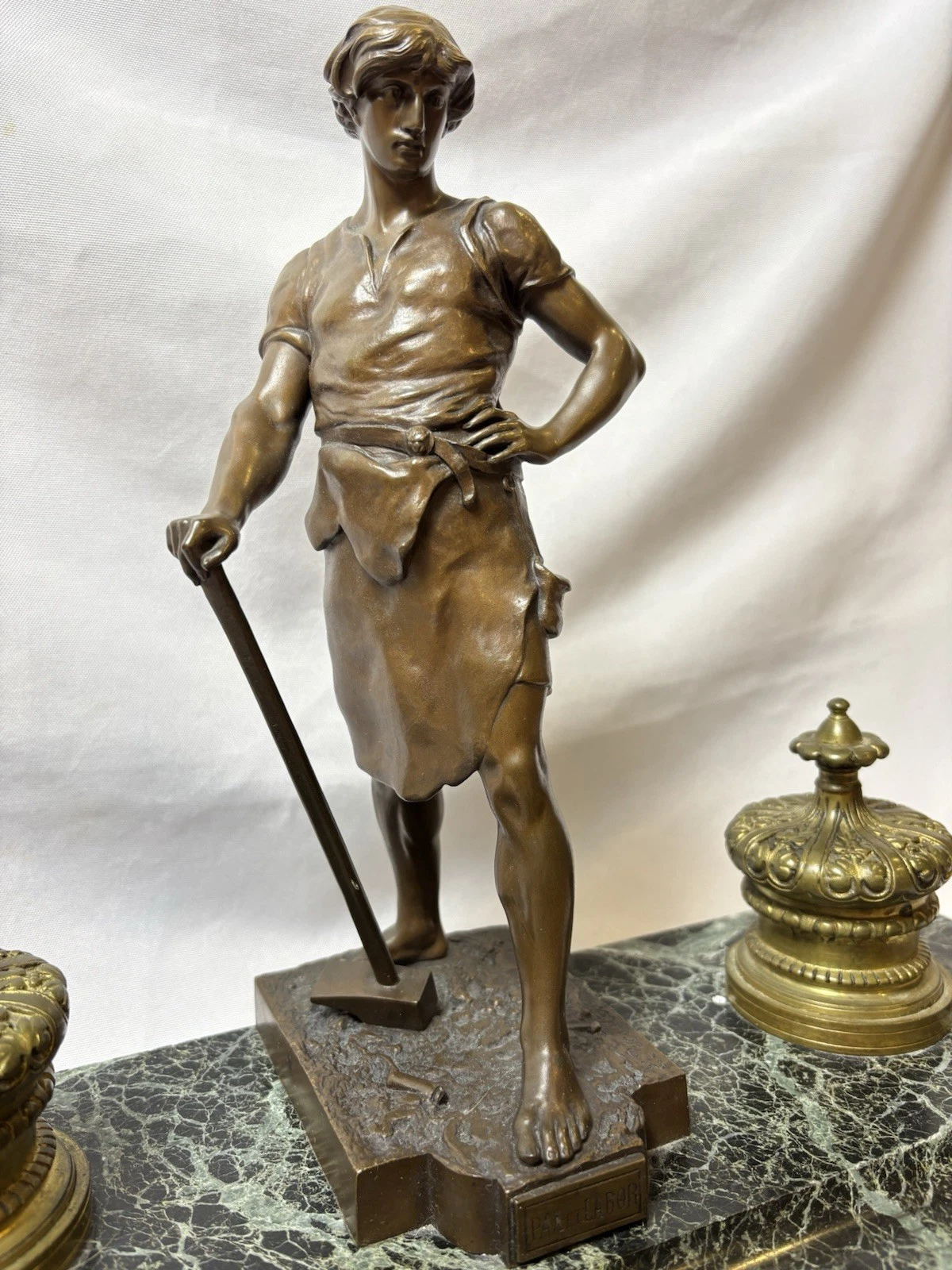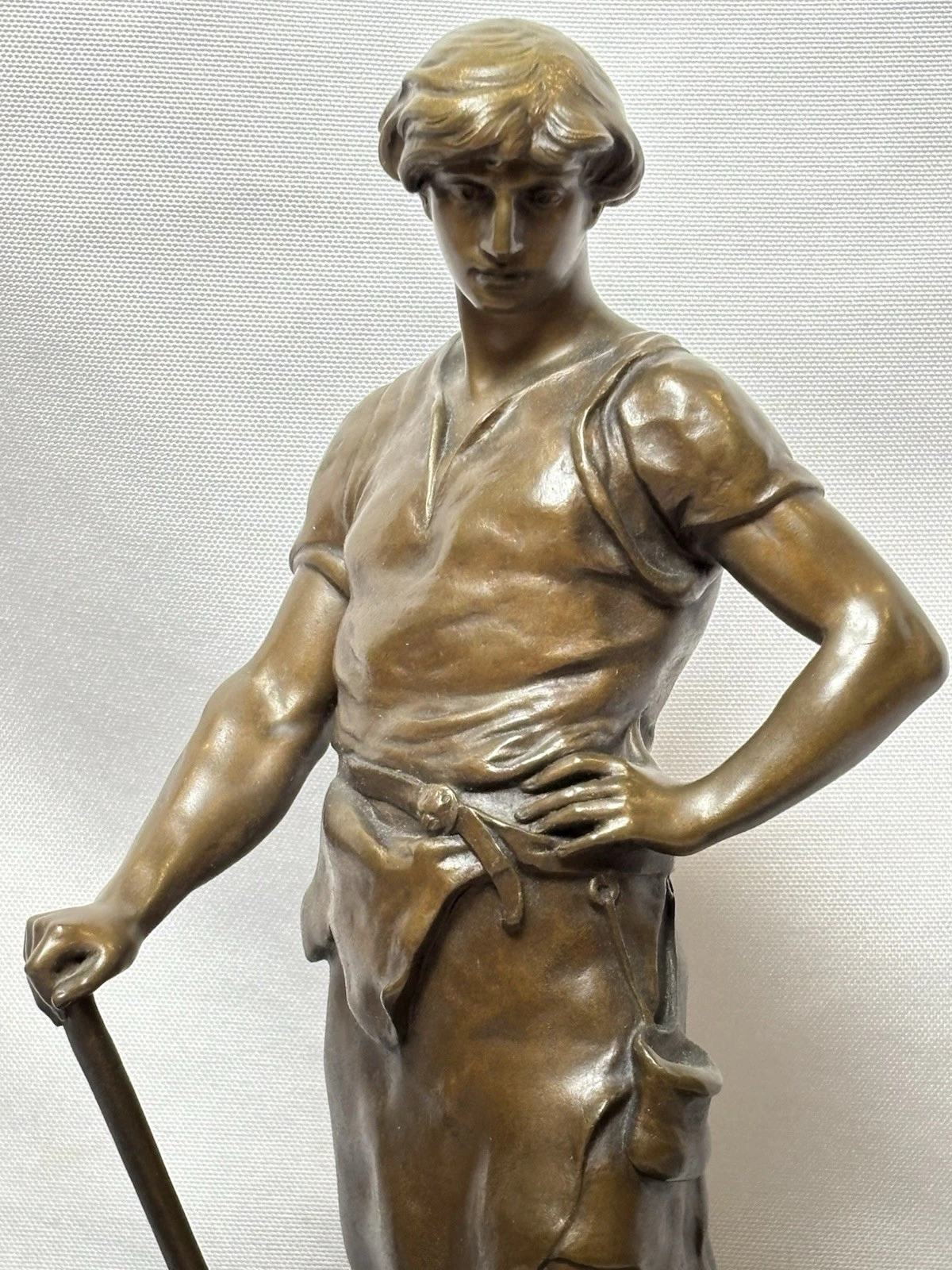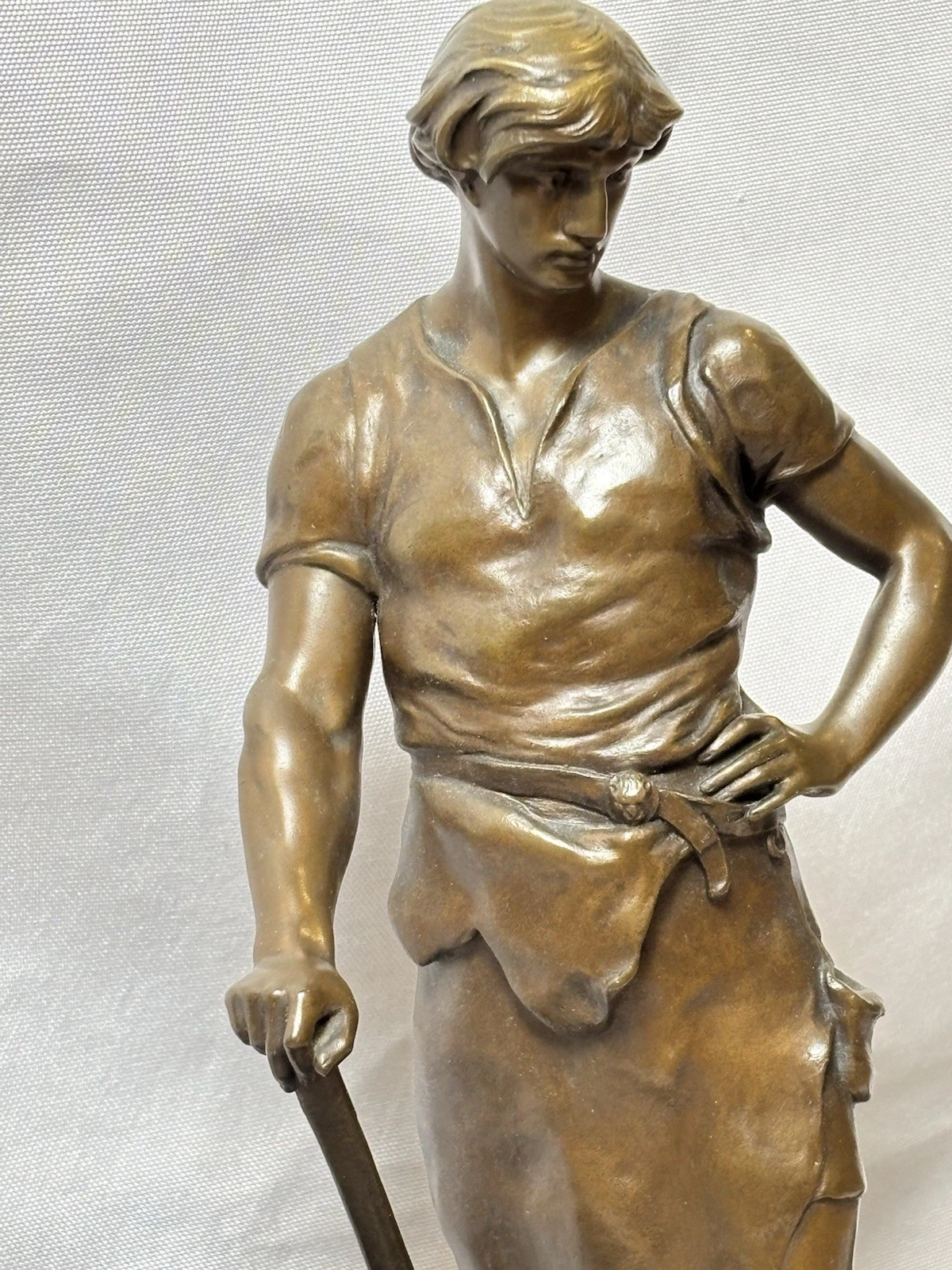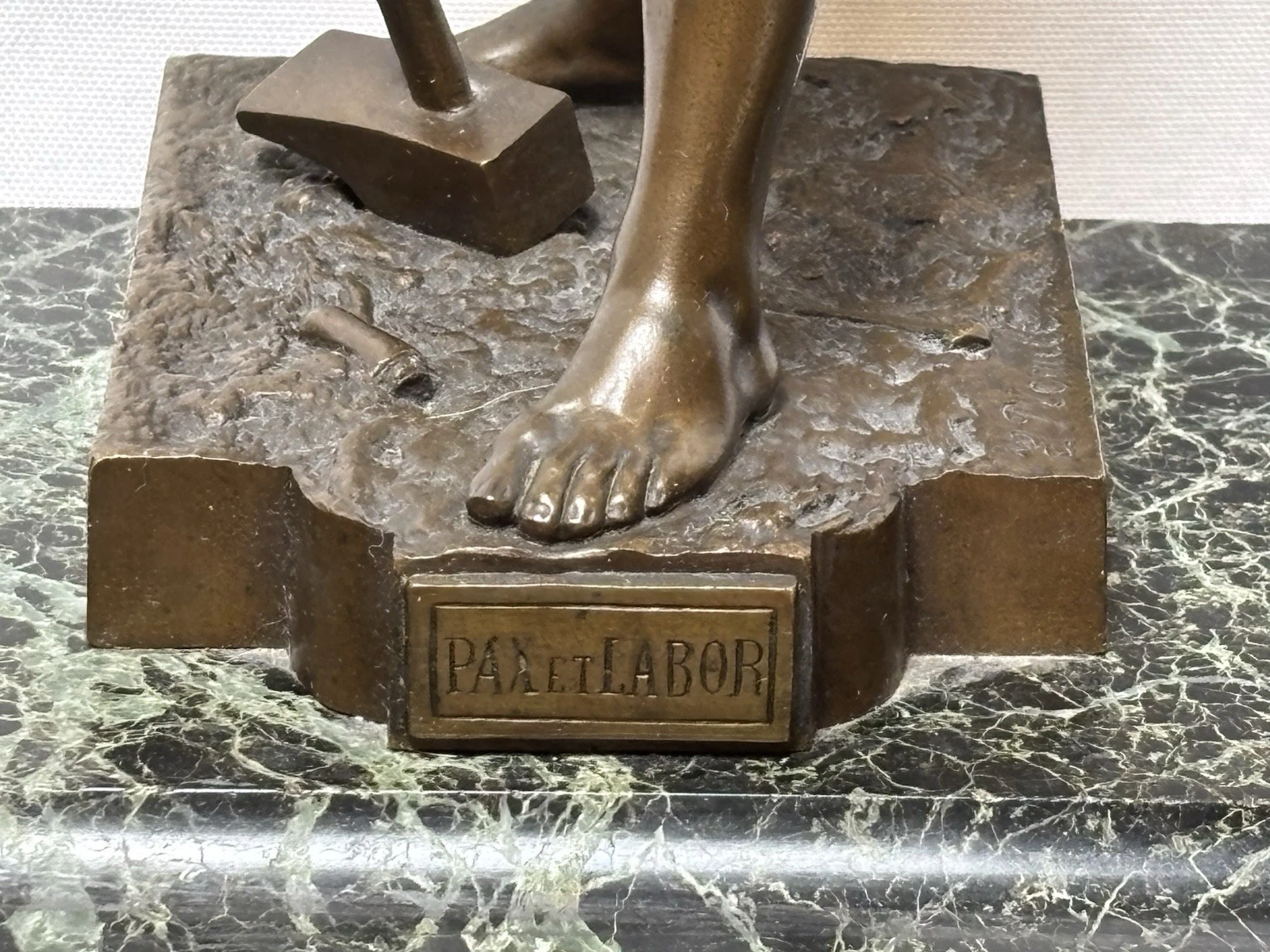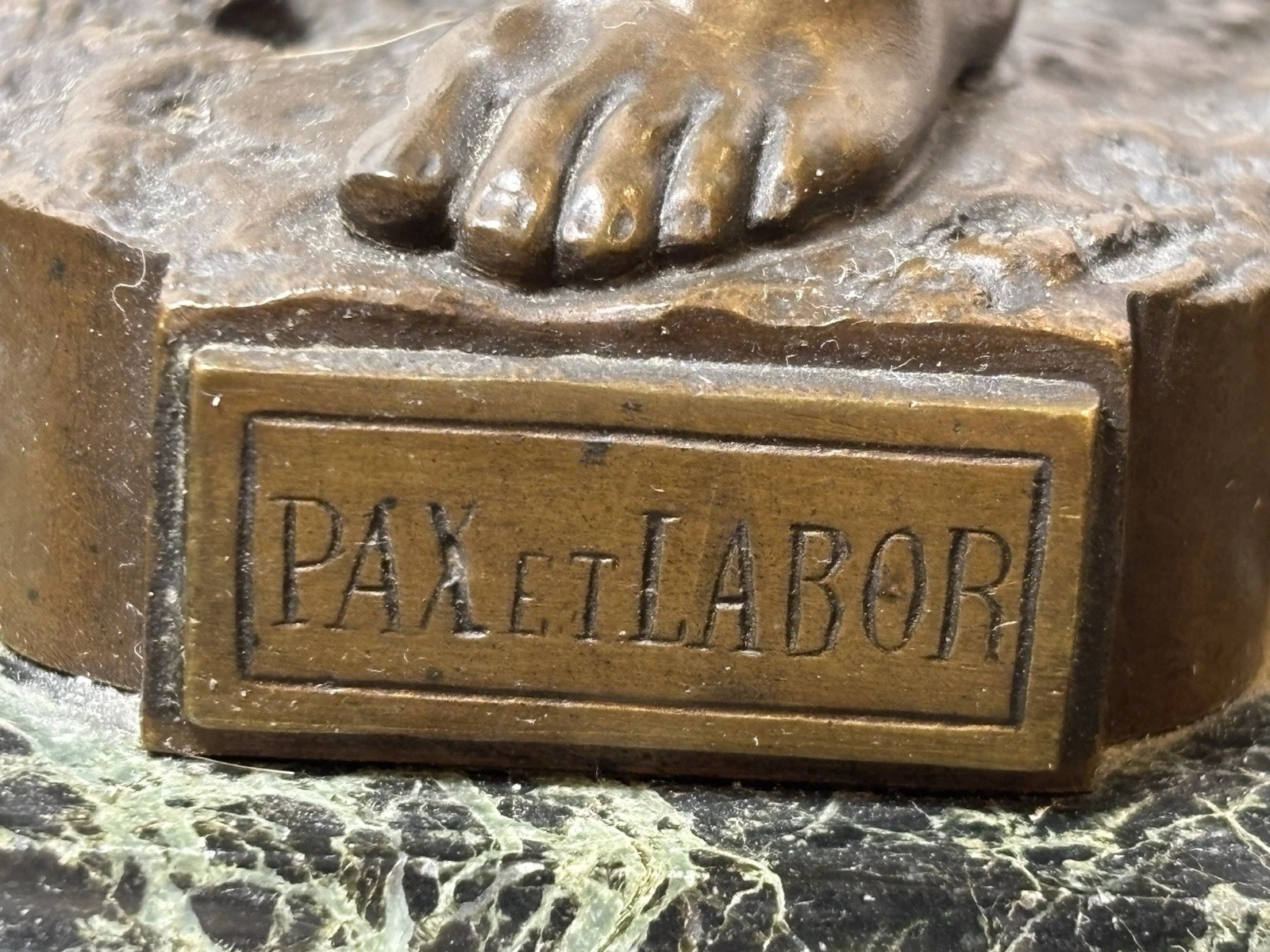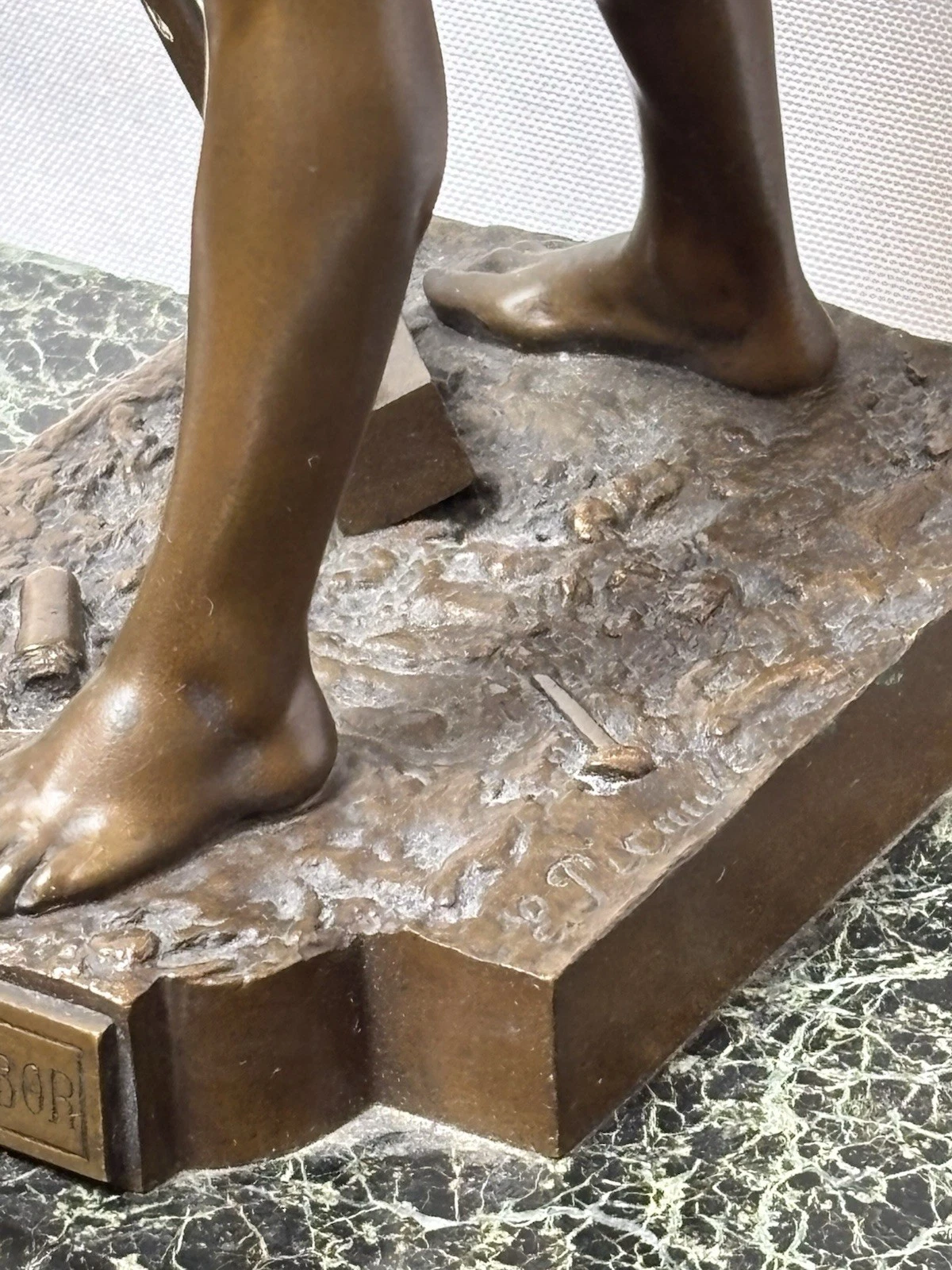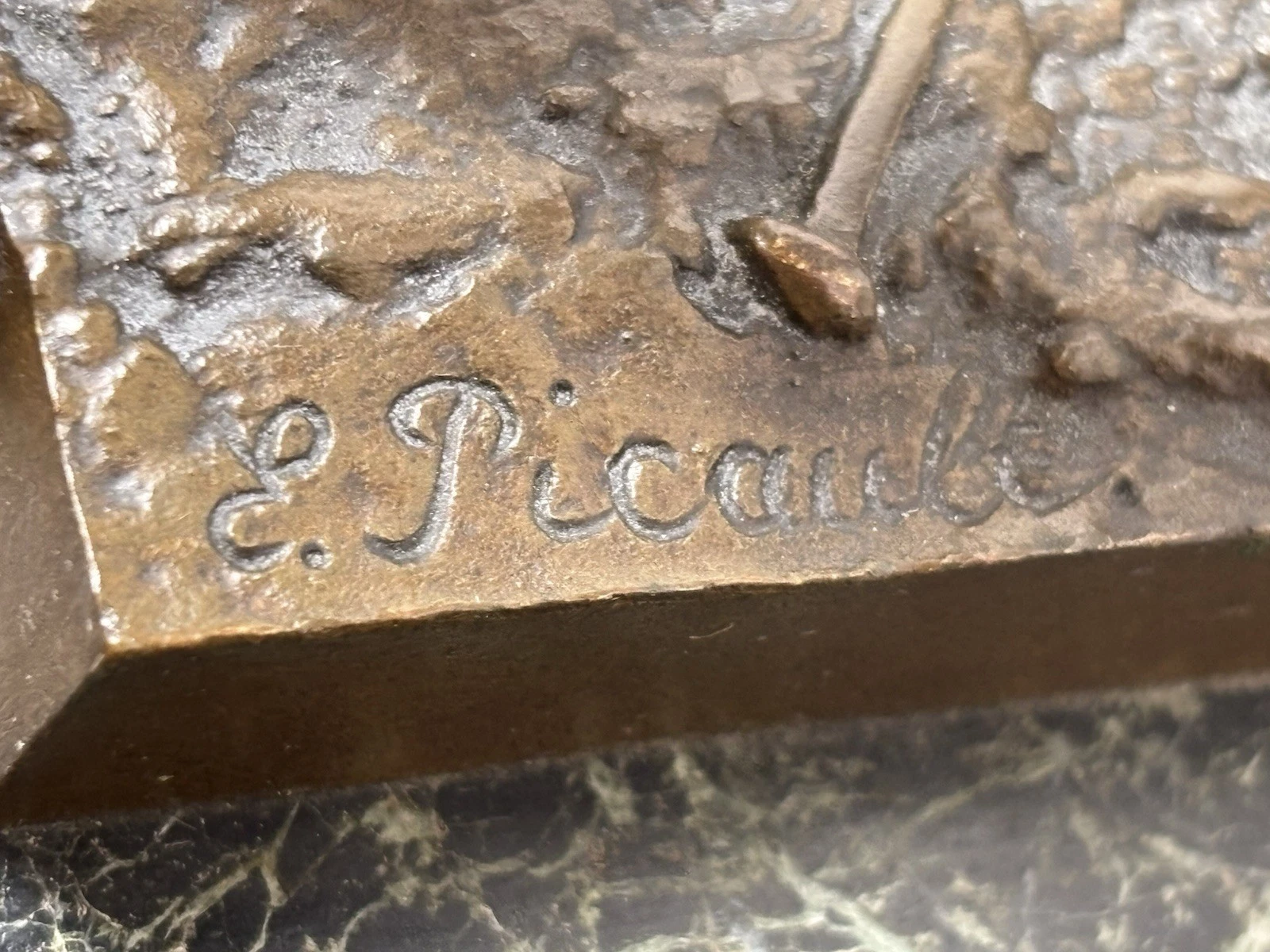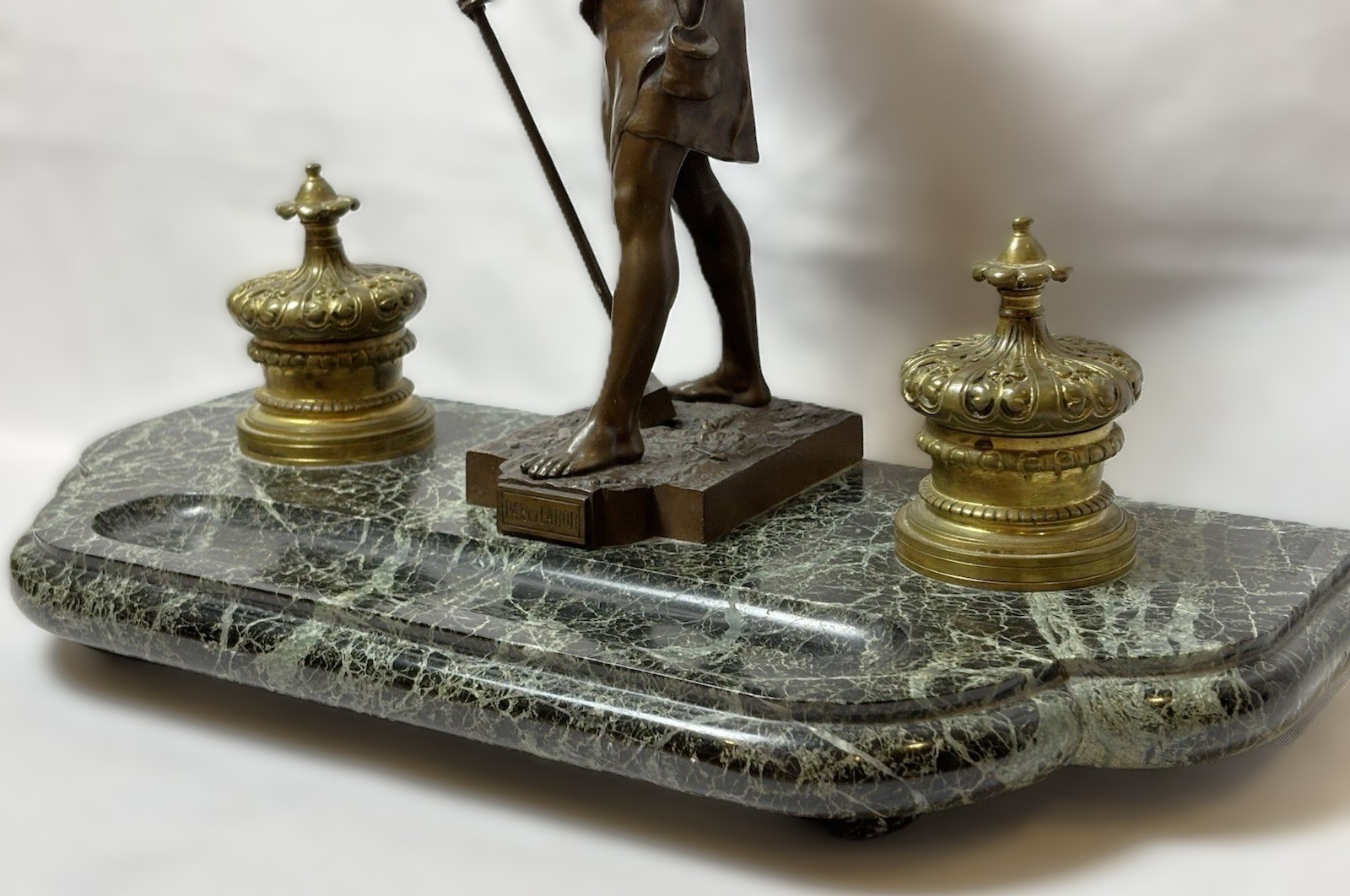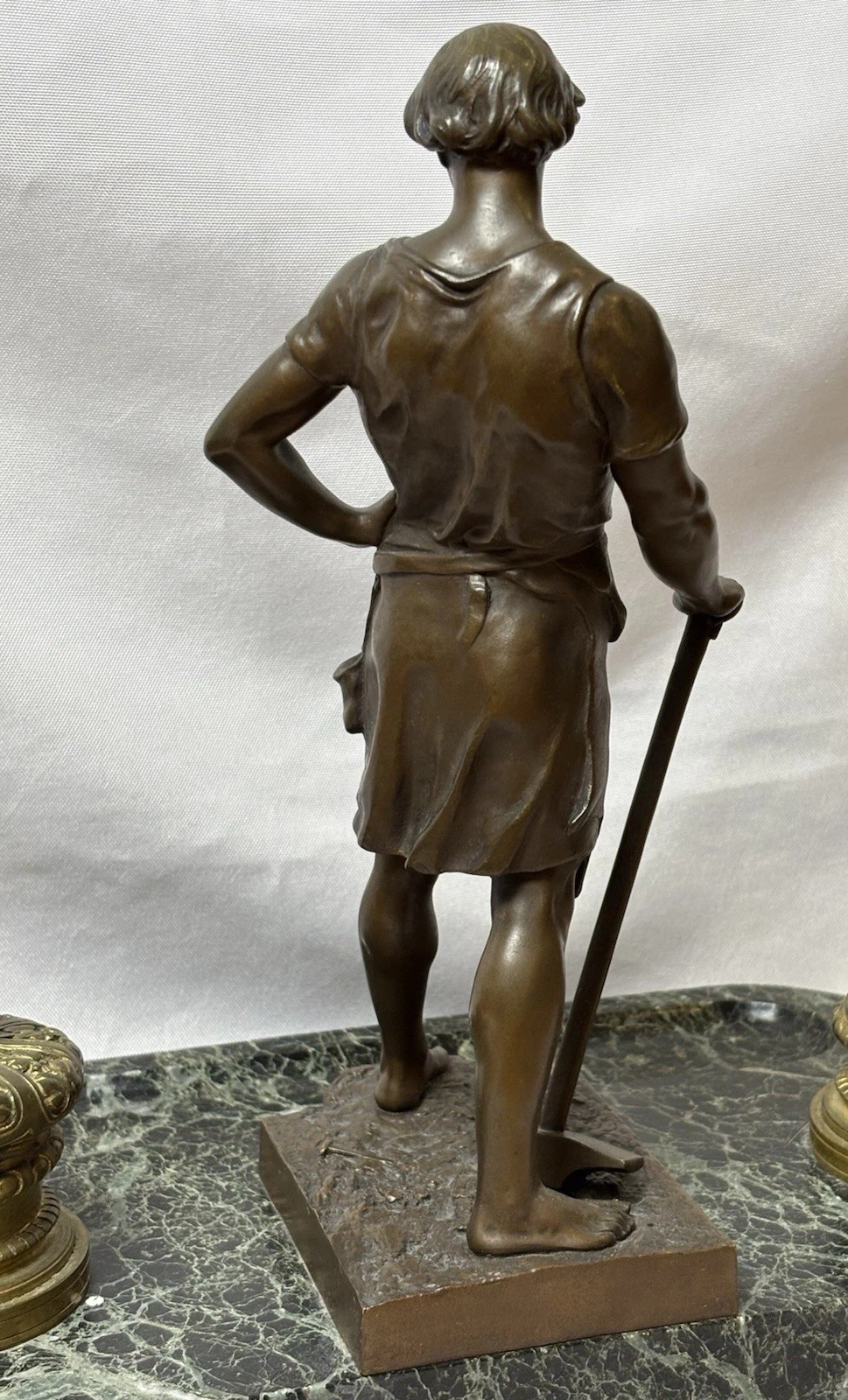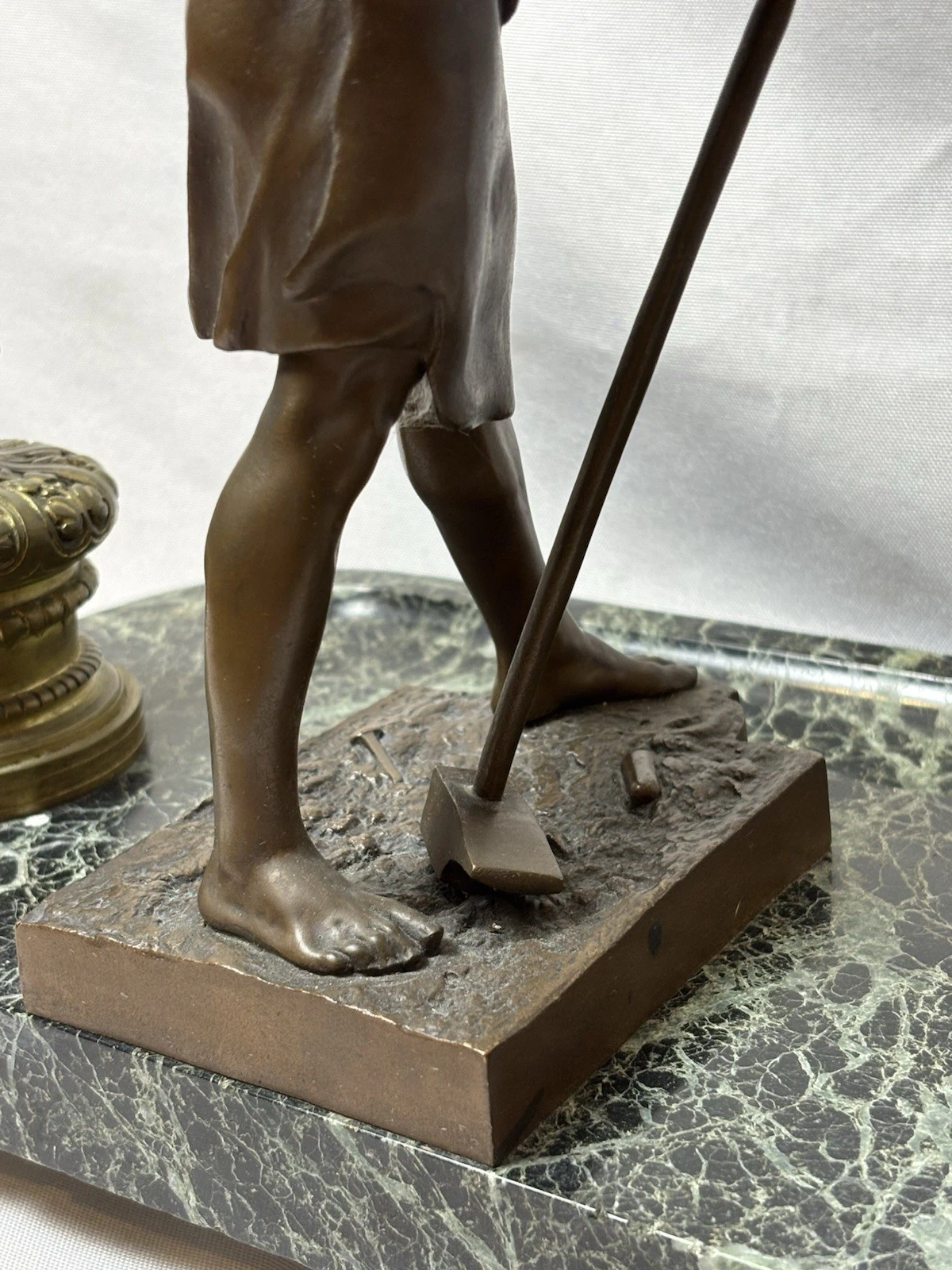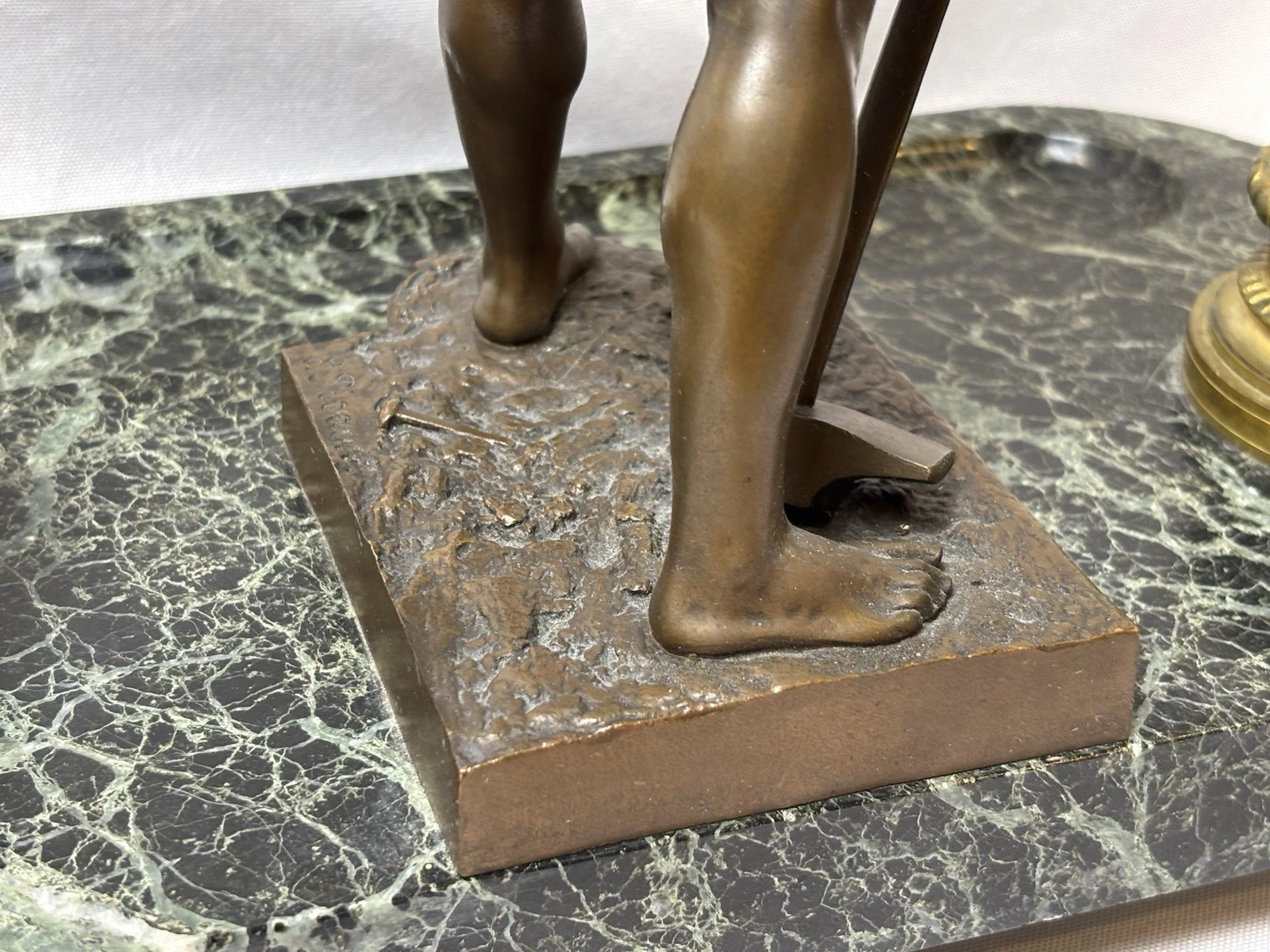
Inkipedia
Bronze Sculpture – “Pax et Labor”
| Categories | Figural - Persons |
| Material | Bronze, Marble |
| Markings | See Narrative |
| Manufacturer | Emile-Luis Picault |
| Origin | France |
| Date or Era | circa 1880 |
| Measuring | 17” long |
This inkstand features a bronze sculpture on a marble base.
- The Inkstand: The base is a rectangular slab of green marble (sometimes referred to as “verde antico”), a popular material for decorative items in the late 19th century. Two brass inkwells flank the sculpture, each with a hinged, spherical lid. A shallow, recessed area in the front is designed to hold pens or other small writing tools.
- The Sculpture: The central bronze sculpture depicts a man, likely a laborer or a blacksmith, standing in a dynamic, powerful pose. He is shown with a muscular physique, suggesting strength and physical work. He is partially draped in a leather apron, and in his right hand, he holds a large sledgehammer, the head of which rests on the base beside his foot. The sculpture is signed “E. Picault” and has a title plaque that reads “Pax et Labor.”
“Pax et Labor”
- Meaning: “Pax et Labor” is a Latin phrase that translates to “Peace and Labor” or “Peace and Work.” It is a motto that emphasizes the idea that peace and prosperity are achieved through hard work and industry. This concept was a common theme in late 19th-century art, which often celebrated the dignity of the working man and the virtues of industrial progress. The presence of a laborer with a sledgehammer underscores this meaning, suggesting that the peace of a nation or a community is built on the efforts of its workers.
- Symbolism: In a broader sense, “Pax et Labor” serves as an allegory. The sculptor uses the heroic figure of the laborer to represent the noble and essential role of work in building a stable and peaceful society.
About Émile Louis Picault (1833-1915)
- Biography: Émile Louis Picault was a prolific and highly successful French sculptor who worked during the late 19th and early 20th centuries. Born in Paris, he studied under the painter Henri Royer. Picault regularly exhibited his work at the prestigious Paris Salon from 1863 until his death.
- Artistic Style and Subjects: Picault’s work is celebrated for its dramatic and allegorical nature. He was known for his figurative bronzes, which often depicted heroes, mythological figures, and allegories of human virtues. His sculptures were produced in large numbers for a broad market, often sold in various sizes and sometimes as components of decorative objects like clocks, lamps, and, as in this case, inkstands.
- Signature: His work is typically signed simply “E. Picault.” His pieces are found in museum collections and are highly valued for their dynamic poses, fine detail, and strong emotional and narrative content.
Sold for $1000 in August 2025
Content disclaimer. The information posted is the owner’s best knowledge and may not have been vetted by the SOIC. We welcome comments, corrections, and additions, working to make our website information comprehensive and accurate.
Join the Society of Inkwell Collectors (SOIC) – it’s free!
Founded in 1981 as a non-profit organization,
we are documenting inkwells (and accessories).
We’re here to help and inform!
